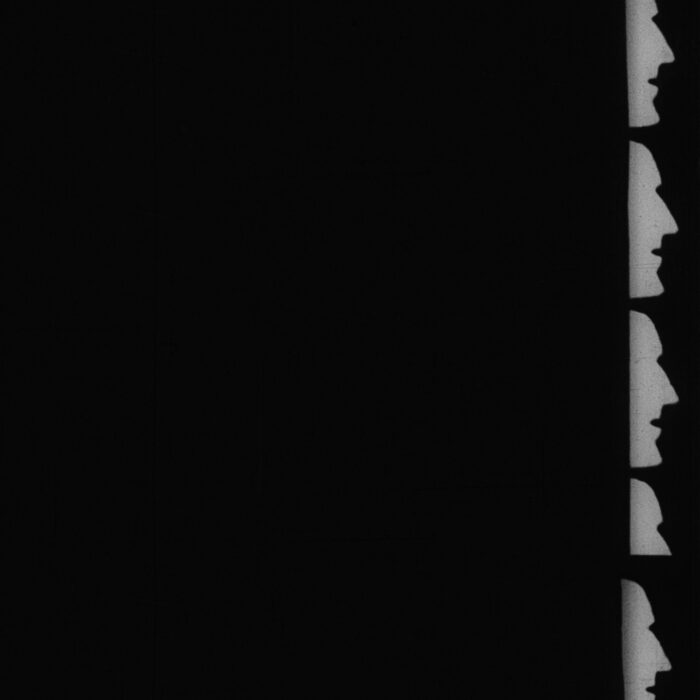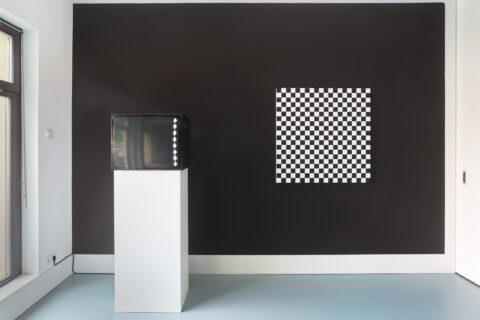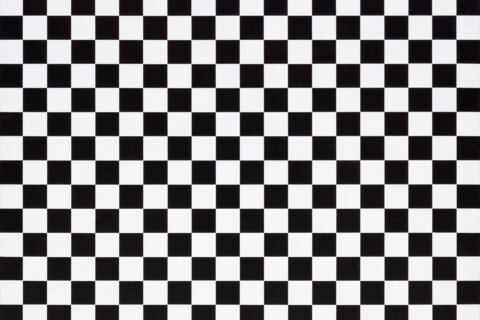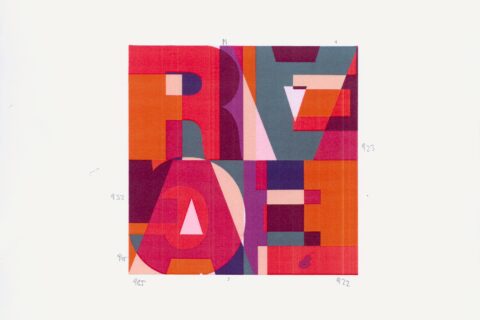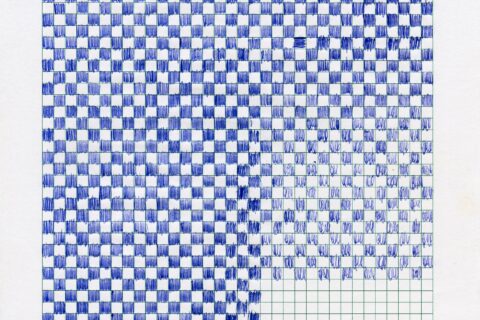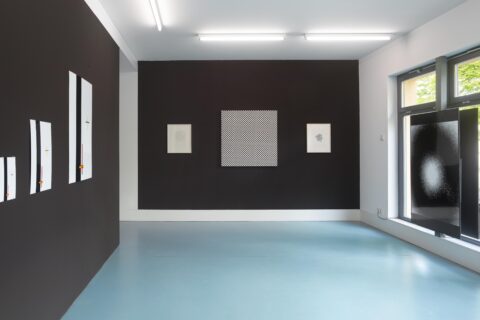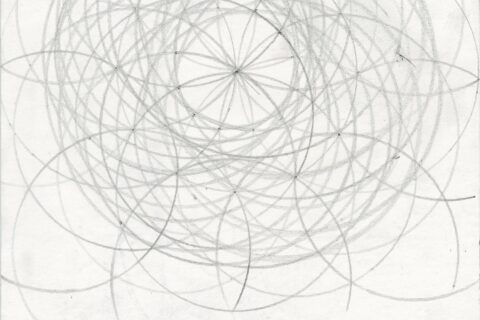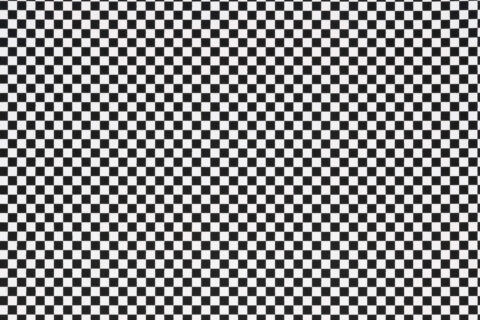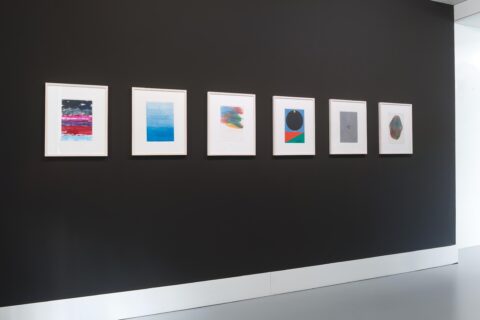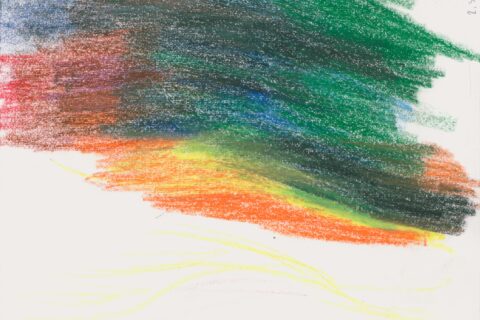Heimo Zobernig Heimo Zobernig & László Moholy-Nagy
26/04/2024 – 31/08/2024
Nagel Draxler Crypto Kiosk
Rosa-Luxemburg-Straße 33
10178 Berlin
Opening / Eröffnung:
Donnerstag, 25. April 2024, 18 – 21 Uhr
Thursday, April 25, 2024, 6 – 9pm
Öffnungszeiten / Opening hours:
Dienstag - Freitag 11 – 18 Uhr, Samstag 12 – 18 Uhr
Tuesday - Friday 11am – 6pm, Saturday 12 – 6pm
Besondere Öffnungszeiten während des Berlin Gallery Weekends /
Special Opening hours during Berlin Gallery Weekend:
Freitag, 26. April 2024, 11 – 21 Uhr, Friday, April 26, 2024, 11am – 9pm
Samstag, 27. April 2024, 11 – 18 Uhr, Saturday, April 27, 2024, 11am – 6pm
Sonntag, 28. April 2024, 11 – 18 Uhr, Sunday, April 30, 2024, 11am – 6pm
Press Release
*Please scroll down for the German version.*
Missing for 86 years, the experimental film “ABC in Sound / Tönendes ABC” (1933) by Hungarian artist and Bauhaus educator László Moholy-Nagy (1895-1946) was rediscovered by curators at the British Film Institute in 2019[1]. This film is the starting point for the exhibition “Heimo Zobernig & László Moholy-Nagy”, which opens on April 26th at our Berlin Crypto Kiosk. The exhibition is organized in collaboration with the Moholy-Nagy Foundation.
Throughout his career, Moholy-Nagy worked across various media. He was a painter, sculptor, photographer, filmmaker, industrial designer, typographer – an approach he shares with Austrian artist Heimo Zobernig (*1958). Zobernig is widely known for his intense studies on typography, language, classification systems, and color theory. In his abstract works, he combines elements of Minimalism with expressive brushstrokes, geometry, or typography, all while maintaining a focus on the grid and monochromatic elements.
Captivated by the advancements in sound recording in the 1930s and intrigued by the concept of synthetic sound creation, Moholy-Nagy delved into the idea of reverse-engineering a sound alphabet from the visual patterns engraved on gramophone discs. “ABC in Sound / Tönendes ABC” showcases a playful array of geometric shapes, textures, cartoon faces, and typography, even incorporating his own fingerprints. In this film he blurred the boundaries between sound and images, challenging the perception of hearing and seeing sound.
In response to “ABC in Sound / Tönendes ABC” Zobernig created the video work “Untitled” (2023). The screen recording depicts a digital brushstroke seamlessly transitioning between white and black, shaping the letters of the alphabet. The video provides a direct yet powerful demonstration of its own creation, presented at triple speed. Zobernig skillfully blurs the lines between the emergence and vanishing of the letters, as well as between foreground and background. Additionally, the use of the alphabet in the film is also concrete and self-referential, as Zobernig introduced a letter listing system that “tagged” all his exhibitions between 1990 and 1992[2]. Furthermore, since 1986, he has consistently utilized the sans-serif typography Helvetica in his catalogue and poster designs, making it a recurring element in his oeuvre.
The integration of technology and industry into art was a primary goal for the visionary László Moholy-Nagy. Throughout his career, he developed techniques that challenged conventional perceptions of how artistic mediums could intersect with technology and everyday objects. One of his most famous works are the so-called “Telephone Paintings”, he described the process of creating as following:
„In 1922 I ordered by telephone from a sign factory five paintings in porcelain enamel. I had the factory’s color chart before me and I sketched my paintings on graph paper. At the other end of the telephone the factory supervisor had the same kind of paper, divided into squares. He took down the dictated shapes in the correct position. (It was like playing chess by correspondence.)”[3]
In formal terms, the “Constructions in Enamel” share an identical abstract, geometric composition in three different sizes. While Moholy-Nagy described the creation process as a game of chess by correspondence, Zobernig uses white and black as a form to play with and brings the checkerboard grids directly onto the canvas. In both chess and painting, one can discern structures and rules, requiring time to comprehend the relationship between the figures on the chessboard.
_________________
[1] British Film Institute
[2] Heimo Zobernig: Farbenalphabet. 2018.
[3] László Moholy-Nagy: Abstract of an Artist, in: The New Vision and Abstract of an Artist, published by George Wittenborn; First Edition Thus, 1947, p. 79.
________________________
Der seit 86 Jahren verschollene Experimentalfilm „ABC in Sound / Tönendes ABC“ (1933) des ungarischen Künstlers und Bauhaus-Lehrers László Moholy-Nagy (1895-1946) wurde 2019 von Kuratoren des British Film Institute wiederentdeckt[1]. Dieser Film bildet den Ausgangspunkt für die Ausstellung „Heimo Zobernig & László Moholy-Nagy“, die am 26. April in unserem Berliner Crypto Kiosk eröffnet. Die Ausstellung ist in Zusammenarbeit mit der Moholy-Nagy-Stiftung entstanden.
Im Laufe seiner Karriere arbeitete Moholy-Nagy mit verschiedensten Medien. Er war Maler, Bildhauer, Fotograf, Filmemacher, Industriedesigner und Typograf – ein Ansatz, den er mit dem österreichischen Künstler Heimo Zobernig (*1958) teilt. Zobernig ist weithin bekannt für seine intensiven Studien zu Typografie, Sprache, Klassifikationssystemen und Farbtheorie. In seinen abstrakten Werken kombiniert er Elemente des Minimalismus mit expressiven Pinselstrichen, Geometrie oder Typografie, wobei er den Schwerpunkt auf das Raster und monochrome Elemente legt.
Fasziniert von den Fortschritten der Tonaufzeichnung in den 1930er Jahren und vom Konzept der synthetischen Klangerzeugung, beschäftigte sich Moholy-Nagy mit der Idee, ein Klangalphabet aus den auf Grammophonplatten eingravierten visuellen Mustern zu entwickeln. „ABC in Sound / Tönendes ABC“ zeigt eine spielerische Anordnung von geometrischen Formen, Texturen, Cartoon-Gesichtern und Typografie, in die selbst seine eigenen Fingerabdrücke eingearbeitet sind. In dem Film verwischt Moholy-Nagy die Grenzen zwischen Klang und Bild und stellt die Wahrnehmung des Hörens und Sehens von Ton in Frage.
Als Antwort auf „ABC in Sound / Tönendes ABC“ entwickelte Zobernig die Videoarbeit „Untitled“ (2023). Die Bildschirmaufnahme zeigt einen digitalen Pinselstrich, der nahtlos zwischen Weiß und Schwarz wechselt und dabei die Buchstaben des Alphabets formt. Das Video ist eine direkte und gleichzeitig kraftvolle Demonstration seiner eigenen Entstehung, gezeigt in dreifacher Geschwindigkeit. Zobernig verwischt gekonnt die Grenzen zwischen dem Auftauchen und Verschwinden der Buchstaben sowie zwischen Vorder- und Hintergrund. Darüber hinaus ist die Verwendung des Alphabets im Film auch konkret und selbstreferenziell. So führte Zobernig ein Buchstabierungssystem ein, das alle seine Ausstellungen zwischen 1990 und 1992 „markierte“[2]. Seit 1986 verwendet er außerdem in seinen Katalog- und Plakatentwürfen konsequent die serifenlose Typografie Helvetica und macht sie damit zu einem wiederkehrenden Element in seinem Œuvre.
Die Integration von Technik und Industrie in die Kunst war ein zentrales Ziel für den Visionär László Moholy-Nagy. Im Laufe seiner Karriere entwickelte er Techniken, die die konventionellen Vorstellungen davon, wie künstlerische Medien mit Technologie und Alltagsgegenständen interagieren können, in Frage stellten. Eine seiner berühmtesten Arbeiten sind die sogenannten „Telephone Paintings“, deren Entstehungsprozess er wie folgt beschrieb:
„In 1922 I ordered by telephone from a sign factory five paintings in porcelain enamel. I had the factory’s color chart before me and I sketched my paintings on graph paper. At the other end of the telephone the factory supervisor had the same kind of paper, divided into squares. He took down the dictated shapes in the correct position. (It was like playing chess by correspondence.)“[3]
Formal haben die „Constructions in Enamel“ eine identische abstrakte, geometrische Komposition in drei verschiedenen Größen. Während Moholy-Nagy den Entstehungsprozess als ein Schachspiel per Korrespondenz beschrieb, nutzt Zobernig Weiß und Schwarz als eine Spielform und bringt die Schachbrettmuster direkt auf die Leinwand. Sowohl im Schachspiel als auch in der Malerei lassen sich Strukturen und Regeln erkennen, die Zeit erfordern, um die Beziehungen zwischen den Figuren auf dem Schachbrett zu begreifen.
_________________
[1] British Film Institute
[2] Heimo Zobernig: Farbenalphabet. 2018.
[3] László Moholy-Nagy: Abstract of an Artist, in: The New Vision and Abstract of an Artist, published by George Wittenborn; First Edition Thus, 1947, p. 79.
